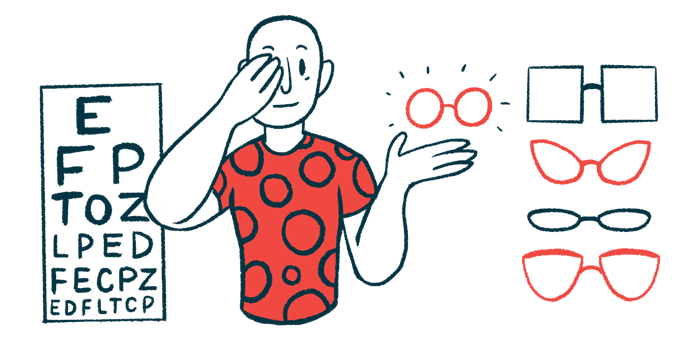Abnormalities in eye tests may help diagnose juvenile Batten: Study
Findings like bull's-eye in retina may be among first disease signs

Children with juvenile Batten disease frequently show abnormalities in eye tests, such as a bull’s-eye appearance in the macula — the center of the retina, at the back of the eye — and reduced electrical activity in light-sensing eye cells, according to a new study.
The findings highlight the usefulness of eye tests in detecting signs of juvenile Batten as early as is possible among patients. Identifying such changes, or other eye abnormalities, can be a crucial first step in receiving a diagnosis of the inherited disorder.
“Recognition of these features will assist in establishing an early diagnosis enabling appropriate therapies, family planning, disease monitoring, and potential enrolment in clinical trials for novel therapies,” the researchers wrote.
The study, “Early recognition of CLN3 disease facilitated by visual electrophysiology and multimodal imaging,” was published in Documenta Ophthalmologica.
Eye tests found to help ID early disease signs
Problems with vision are characteristic of Batten disease, and are often the first symptom to develop. But in addition to overt issues with vision, children with the disorder tend to have abnormalities on eye tests. In many cases, such problems occur before cognitive issues or seizures.
Juvenile Batten disease also is known as CLN3 disease because it is caused by mutations in the CLN3 gene.
“Understanding of the ophthalmological [eye-related] findings is crucial to early diagnosis of CLN3-related disease, as these commonly precede the development of neurological signs,” the researchers wrote.
The team noted that early diagnosis will be especially important in coming years, as new treatments for Batten are entering clinical trials. Any therapies for Batten are broadly expected to offer the most benefit when given as early as possible.
To help promote recognition of eye signs that are suggestive of juvenile Batten, a team of scientists in Australia reported on findings from detailed eye exams of children with the disease who were seen at their clinic.
“The purpose of this study is to report ocular findings of CLN3 disease patients to aid early diagnosis, enable disease monitoring, and assist further trials of novel CLN3 therapies,” the researchers wrote.
The study included data on five children, ranging in age from 4.6 to 11.7 when first evaluated. Four of the children were girls, and one was a boy.
The age at which the children first developed visual problems ranged from younger than 3 years, to nearly 12 years. Neurological abnormalities, such as autistic behaviors or slow language acquisition, were documented in four of the children.
Bull’s-eye is most ‘consistent and prominent’ finding in eye tests
To assess the children’s vision, researchers calculated the best corrected visual acuity (BCVA) based on a logarithm of the minimum angle of resolution chart, or LogMAR. The BCVA is a common eye test involving reading progressively smaller letters on a board. While BCVA can be reflected as a fraction (e.g., 20/20), the LogMAR method instead reflects outcomes on a scale from 0, indicating no vision, to 1 for perfect vision.
For these five children, the BCVA LogMAR ranged from 0.18 to 0.88 at their initial evaluation. Among two patients who had follow-up data available, these values tended to worsen considerably over time as the disease progressed.
Analyses of the patients’ retinas, which are the light-sensing portion of the eyes, showed a characteristic bull’s-eye macular appearance in all five children. This feature gets its name from a light-colored ring of damage around the macula, which is a dark portion of the retina with the keenest vision, resulting in a look that resembles a target or bull’s-eye.
“Bull’s eye maculopathy is the most consistent and prominent macular finding in this patient cohort as also found in previous studies,” the researchers wrote.
Damage to another part of the retina, called the foveal ellipsoid zone or EV, also were found in all five patients. Children with worse vision, as measured by BCVA, also tended to have more EV damage, the researchers noted.
The findings of [reduced electrical activity] with concurrent bull’s eye maculopathy in young age should prompt early neurological assessment for signs of neurodegeneration and referral for genomic investigation for CLN3 gene defects.
Measures of the electrical activity in the retina, known as electroretinogram, showed abnormally low electrical activity in all five children. Similar findings of reduced electrical activity in the eye have previously been reported in children with juvenile Batten, the researchers said.
The team suggested that reduced electrical activity combined with the bull’s-eye macular appearance could be a key sign of the disease.
“The findings of [reduced electrical activity] with concurrent bull’s eye maculopathy in young age should prompt early neurological assessment for signs of neurodegeneration and referral for genomic investigation for CLN3 gene defects,” the scientists concluded.








